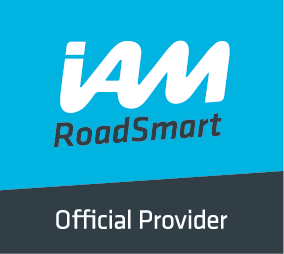Driving Tips from the St. Helens Group
Read our useful driving tips provided by Mark Farnworth, Group Vice-President or from other Group members where stated.
Browse by topic (click to view and then press back arrow)
ABS, Books, 'Automatic' Gearboxes, Dual carriageways, Country driving, Eco driving, Handbrake, Horses, Motorway driving, Observation, Overtaking, Roundabouts, Signalling, Spoken thought, System of Car Control, Terminology, Town Driving, Traffic lights, Vehicle balance
Motorway driving
Joining: Motorways are joined using slip roads which are usually two lane carriageways. When traveling down a slip road use your mirrors so that you know the position of vehicles behind and to your side. At the earliest opportunity a check over your right shoulder will tell you the amount and movement of traffic on the motorway. If the traffic is heavy you may have to decelerate or even brake so that you can spend more time searching for a gap. A right indication would be a good idea on a busy motorway to 'wake' people up to your intentions. If the traffic is light and there is no one behind a right indication may not be required. Use the full length of the acceleration lane, if you need to, to get onto the motorway. However, only use the full length if there is a gap to go for. Don't drive to the end of the acceleration lane hoping a gap will develop.
On the Motorway: Frequent use of the mirrors will keep you informed about the speed and position of vehicles behind. Before changing lane remember to carry out a sideways glance into the lane you intend to move, in case there is a vehicle in your mirror blind spot. When glancing just move your head, not your body. A full shoulder check is not necessary and would be dangerous at high speed. Follow the Highway Code rules about lane discipline and moving back to the left after overtaking. The maximum legal speed limit on a motorway is 70 mph. Take this into account BEFORE overtaking. Don't 'lane hog' by driving in the center or right hand lanes and disregarding available space in the lane to your left. If you are driving at the legal limit you have no right to impede traffic behind that want to go faster.
Be alert when approaching junctions. If the motorway is busy then it would be anticipated that the slip road will also be busy, so consider moving to the middle lane to allow easier access for joining vehicles. If the motorway has little traffic then change to the middle lane if you SEE a vehicle coming down the slip road. Don't automatically change from the left to the middle lane at all junctions. Think and use your judgment. Whether you do or don't change to the middle lane will depend on the circumstances, but in either case frequent left hand glances at junctions are necessary.
Change lanes and overtake smoothly. When indicating to change lane let your indicator flash at least three times BEFORE you change position. If you see that there is nothing to your side or behind you for a few hundred metres then consider NOT indicating to overtake. Drive at a safe distance behind the vehicle in front. The 'two second rule' is a good 'rule of thumb' but it is advisable to give yourself more than this if you can, perhaps four seconds on a wet road.
Leaving the Motorway: Get into the left lane in good time before your exit. Don't leave this too late so that you have to 'force' your way into the left lane. While approaching the junction you want, maintain your speed up to the start of the deceleration lane - if you can. This will not be possible if you begin to draw nearer to slower vehicles in the left hand lane. It is important to avoid severe deceleration or flashing brake lights on motorways - for obvious reasons. If following traffic is sufficiently close then indicate your intention to leave the motorway, otherwise don't. A good point to start indicating would be at the 300 yard marker post.
By Mark Farnworth
Disclaimer: Driving is never a black and white activity, but full of grey areas, therefore neither I nor my fellow Observers in the St Helens & District Group of Advanced Motorists are liable for any consequences you may experience as a result of reading our advice. You are the driver. You should be in control of your vehicle at all times.

